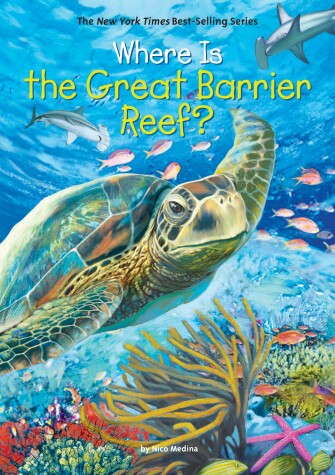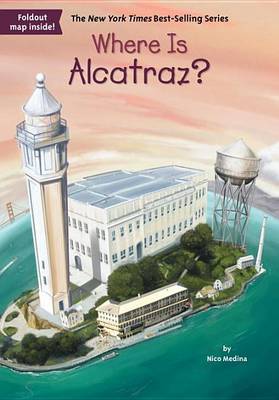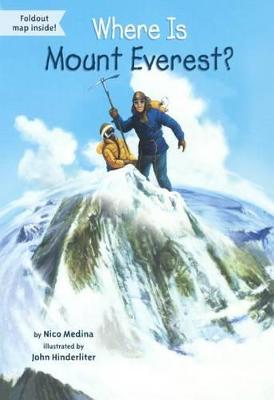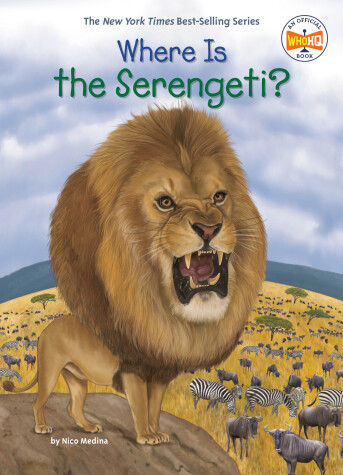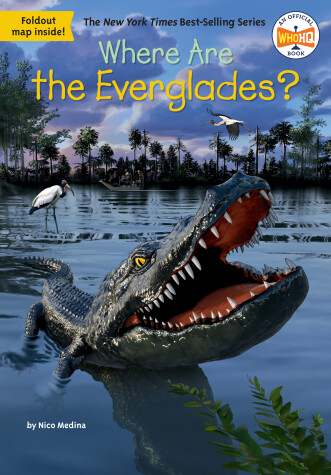Where Is...?
5 total works
In this Where Is? title, kids can explore the Great Barrier Reef—big enough to be seen from space but made up of billions of tiny living organisms.
The Great Barrier Reef, off the coast of Australia, is the world's largest coral reef system. Stretching more than 1,400 miles, it provides a home to a wide diversity of creatures. Designated a World Heritage Site, the reef is suffering from the effects of climate change but this fascinating book shows this spectacular part of our planet.
The Great Barrier Reef, off the coast of Australia, is the world's largest coral reef system. Stretching more than 1,400 miles, it provides a home to a wide diversity of creatures. Designated a World Heritage Site, the reef is suffering from the effects of climate change but this fascinating book shows this spectacular part of our planet.
If you've never known what a wildebeest is, you'll find out now in this latest Where? Is title about the Serengeti.
Each year, over 1.5 million wildebeest make a harrowing journey (more than one thousand miles!) between Tanzania and Kenya. They are in search of new land to graze. Even if these creatures avoid vicious attacks from lions and crocodiles, they could still fall prey to thirst, hunger, and exhaustion. This book not only follows the exciting Migration, but also tells about the other creatures and peoples that co-exist along these beautiful landscapes of the Serengeti.
Each year, over 1.5 million wildebeest make a harrowing journey (more than one thousand miles!) between Tanzania and Kenya. They are in search of new land to graze. Even if these creatures avoid vicious attacks from lions and crocodiles, they could still fall prey to thirst, hunger, and exhaustion. This book not only follows the exciting Migration, but also tells about the other creatures and peoples that co-exist along these beautiful landscapes of the Serengeti.
Journey into the Everglades—a national park in Florida home to hundreds of species of animals from crocodiles to manatees—in this illustrated book for young readers!
From the #1 New York Times bestselling Who Was? series comes Where Is?, a series that tells the stories of world-famous landmarks and natural wonders, featuring a fold-out map!
Long before the Everglades became one of the largest wetlands in the world and a national park, it was covered by a warm, shallow sea. Across millions of years, sea levels dropped, the land below surfaced, and the area transformed into a thriving environment for unique plants and animals like mangrove forests and the Florida panther.
By the mid-1800s, most of the indigenous people living in the Everglades had been killed or forced off the land. By 1900, Florida had become the nation's twenty-seventh state and had begun draining the Everglades to create land for farms and cities. With the loss of so much of the wetlands, native plants and animals began to die off. Although the Everglades is protected today, it still faces several challenges, including pollution, rising sea levels, and pollution.
The Everglades, often called the "River of Grass," is truly a natural treasure, and its history teaches us about the importance of taking care of our environment.
From the #1 New York Times bestselling Who Was? series comes Where Is?, a series that tells the stories of world-famous landmarks and natural wonders, featuring a fold-out map!
Long before the Everglades became one of the largest wetlands in the world and a national park, it was covered by a warm, shallow sea. Across millions of years, sea levels dropped, the land below surfaced, and the area transformed into a thriving environment for unique plants and animals like mangrove forests and the Florida panther.
By the mid-1800s, most of the indigenous people living in the Everglades had been killed or forced off the land. By 1900, Florida had become the nation's twenty-seventh state and had begun draining the Everglades to create land for farms and cities. With the loss of so much of the wetlands, native plants and animals began to die off. Although the Everglades is protected today, it still faces several challenges, including pollution, rising sea levels, and pollution.
The Everglades, often called the "River of Grass," is truly a natural treasure, and its history teaches us about the importance of taking care of our environment.
